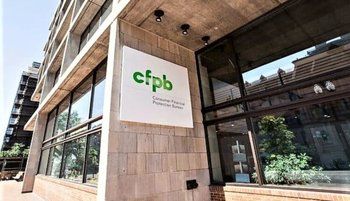 The forms lenders use to convey information about a home loan to borrowers are notoriously complicated, despite repeated redesigns.
The forms lenders use to convey information about a home loan to borrowers are notoriously complicated, despite repeated redesigns.
The latest attempt, this one by the federal Consumer Financial Protection Agency (CFPB), combines multiple documents into just two forms (view the forms by scrolling to the bottom of the article):
- A three-page “Loan Estimate” form
- A five-page “Closing Disclosure” form
In a brochure, the CFPB says the new forms will:
- Reduce paperwork and consumer confusion
- Help consumers understand complicated transactions
- Make it easier for consumers to compare loans and decide whether they can afford a home and mortgage, including property taxes and homeowner insurance
- Warn consumers about prepayment penalties and other loan terms they might want to avoid
- Make closing cost estimates more accurate
- Give consumers more time to review final terms and costs before they sign their closing documents
Fred Kreger, certified mortgage consultant at American Family Funding in Santa Clarita, California, is enthusiastic about the new forms.
"These disclosures clearly define what a consumer will pay for a loan, what the closing costs will be, how much (money) they have to come in with for that closing and what their payment will be," Kreger says.
TILA, RESPA, TRID
Industry insiders refer to the new forms as "TILA-RESPA," the acronyms for the federal Truth in Lending Act and Real Estate Settlement Procedures Act. The acronym TRID is also used. That stands for "TILA-RESPA Integrated Disclosures."
Both forms include sections titled:
- "Loan Terms"
- "Projected Payments"
- "Costs at Closing" "Closing Cost Details"
- "Additional Information About This Loan"
The forms will be required as of October 3, 2015.
A new number
Borrowers will still see a loan's Annual Percentage Rate (APR), which includes the interest rate and some closing costs, on the Loan Estimate form.
They'll also see a new number: the Total Interest Percentage (TIP), which is the total interest over the life of the loan divided by the loan amount, Kreger explains.
TIP is similar to the total interest expense; however, TIP is expressed as a percentage instead of a dollar amount. Unlike APR, TIP doesn't include any closing costs.
More accurate estimates of closing costs
Borrowers should also see more accurate estimated closing costs on the Loan Estimate, says Michelle Velez, sales manager at W.J. Bradley, a mortgage company in San Mateo, California.
Rather than pad the estimates so they aren't exceeded at closing, lenders will have to give borrowers more credible information.
"You can't overcharge (on the estimate) and when you come to closing have it cost less because the CFPB frowns on that," Velez says.
Commissions
Another change is that in a purchase transaction, the realty brokers' commissions will be disclosed to buyers as well as sellers on the Closing Disclosure form.
The intention is to be "as transparent as possible," Kreger says, though he adds, "Realtors did not like this."
The order of the forms
The Closing Disclosure form must be given to borrowers three days before they finalize their loan.
It's not easy to pinpoint when the clock starts ticking since the timeframe depends on:
- Whether the disclosure is provided by U.S. Mail or electronically
- Whether the borrower must acknowledge receipt of the disclosure and if so when
- Which days of the week the lender is open for business
The important point is that borrowers should get the Closing Disclosure form well before they sign their loan documents.
"The CFPB wants to make sure that people aren't getting the Closing Disclosure and having to sign the same day and be under pressure," Kreger says.
Changes that trigger a new form
Three changes trigger a fresh Closing Disclosure:
- The APR increases by at least one-eighth percent for a fixed-rate loan or one-quarter percent for an ARM
- The type of loan changes
- A prepayment penalty is added
A fresh form means a new review period.
Longer timelines?
"You can't provide your Loan Estimate and your Closing Disclosure on the same day, so you provide your Loan Estimate, you wait 24 hours and then you provide your Closing Disclosure," Velez says.
Judging by the CFPB's sample calendars, the worst-case scenario could take 88 days to close a loan, Velez adds. That's unlikely, but borrowers should plan accordingly.
Apart from the longer timeframe, not much else will really change in the loan process, says Jay Dacey, mortgage consultant at Metropolitan Financial Mortgage in Edina, Minneapolis.
"If you're used to a 30-day purchase to close, plan on a 45-day closing period," he says. "At the end of the day, your payment will be the same and your down payment will be the same."
Here is the “Loan Estimate” form:
Here is the "Closing Disclosure" form:



